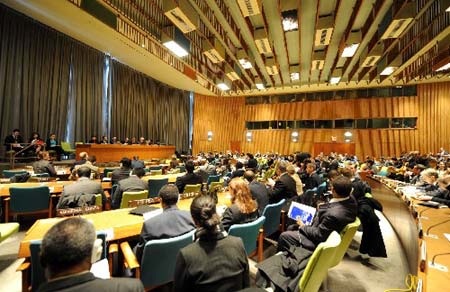By Wang Xiangjiang
With the launch of intergovernmental negotiations on the reform of the Security Council, the United Nations has initiated a fresh attempt to restructure its most powerful body.
Ambassadors from the world body's 192 member states huddled behind closed doors on Thursday to jump start a process that has lasted for decades but so far yielded no substantive results.
Analysts say that in light of the issue's complexity and far-reaching implications, the road ahead will be beset with challenges that nothing short of an international consensus could help surmount.
 |
|
The UN General Assembly opened on Thursday intergovernmental negotiations on the reform of the Security Council.[Xinhua]
|
The need for reform
Despite the difficult nature of this issue, the vast majority of countries have supported the restructuring of a Council that has largely remained unchanged since its inception in the 1940s.
When the Council held its first session on Jan. 17, 1946 in London, it had five veto-holding permanent members, namely China, France, the Soviet Union, Britain and the United States, as well as six non-permanent members elected on a regional and two-year basis. In 1965, the Council was expanded to include four more non-permanent seats and has maintained its membership level at 15 states ever since.
With a growing UN membership and in face of challenges of a new century, most countries agree that the Security Council, founded on the remains of World War II, can no longer fully reflect present-day realities.
One of the chronic problems is the under-representation of developing countries, which account for more than two thirds of the UN's 192 member states.
A stronger presence for developing countries, in particular Africans states, would better help the Council to shoulder its primary responsibility of maintaining international peace and security.